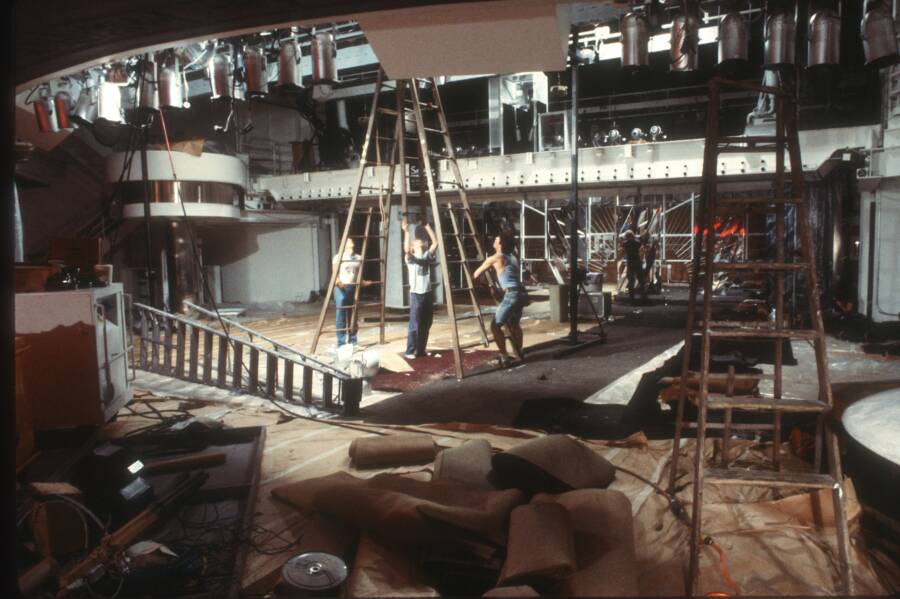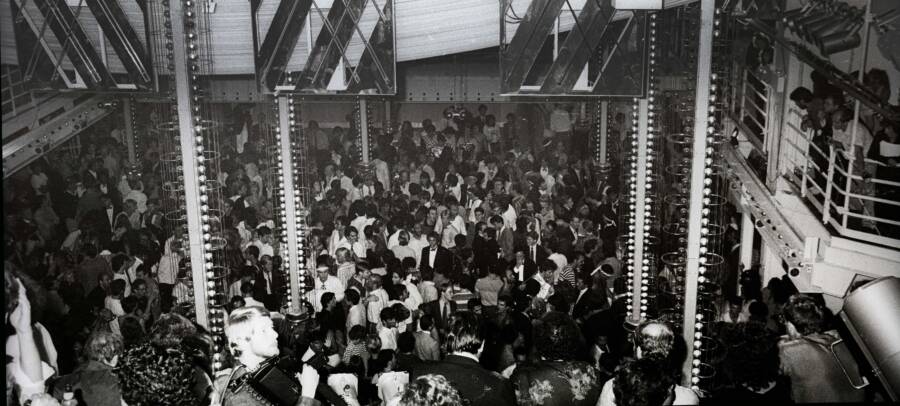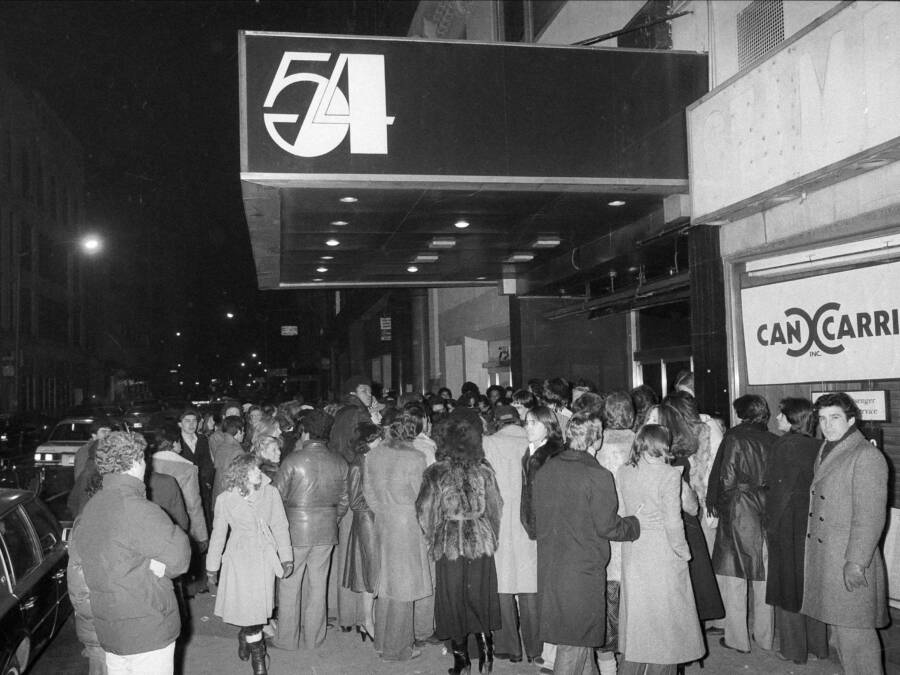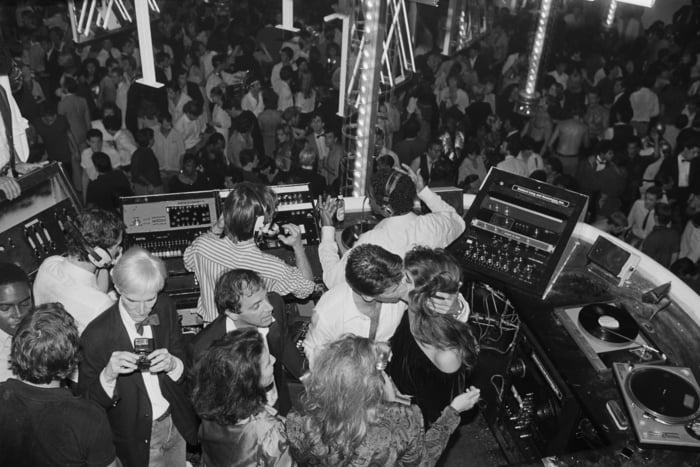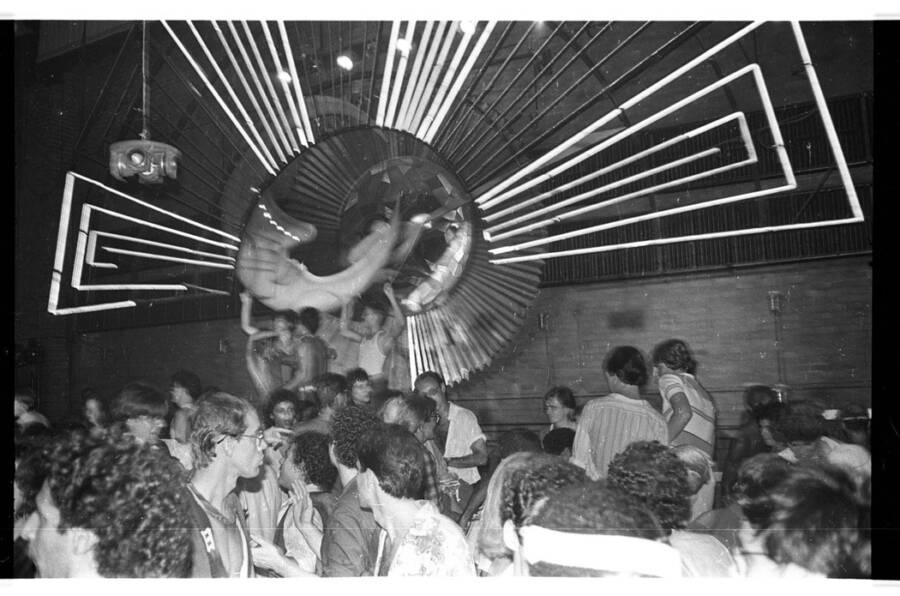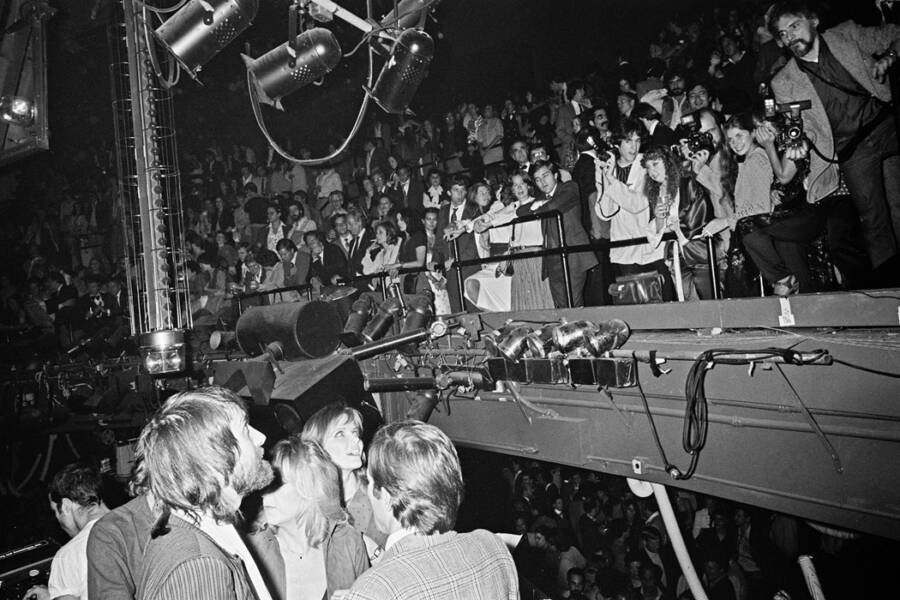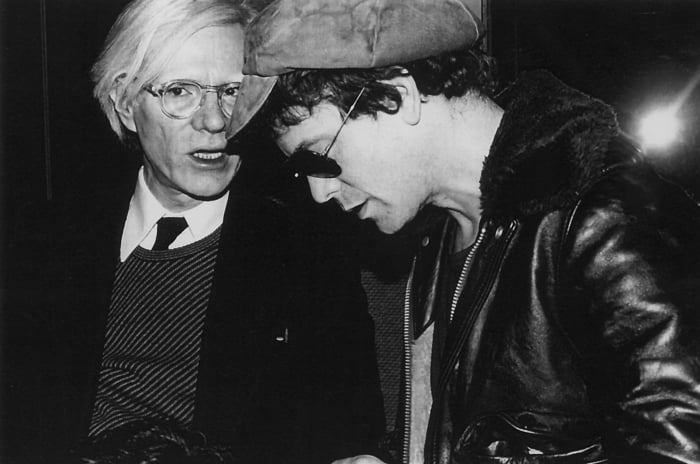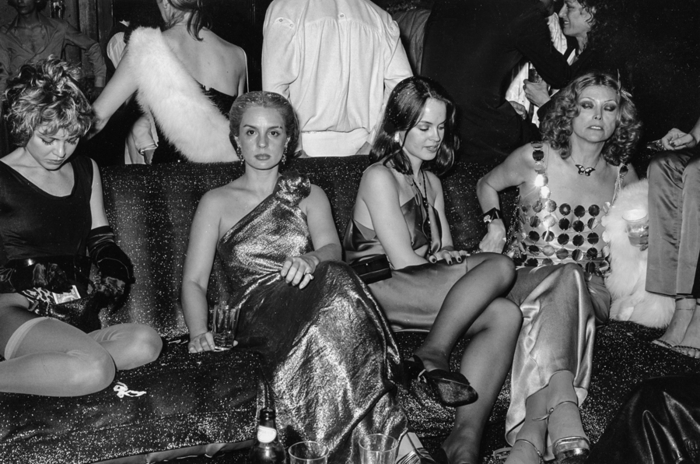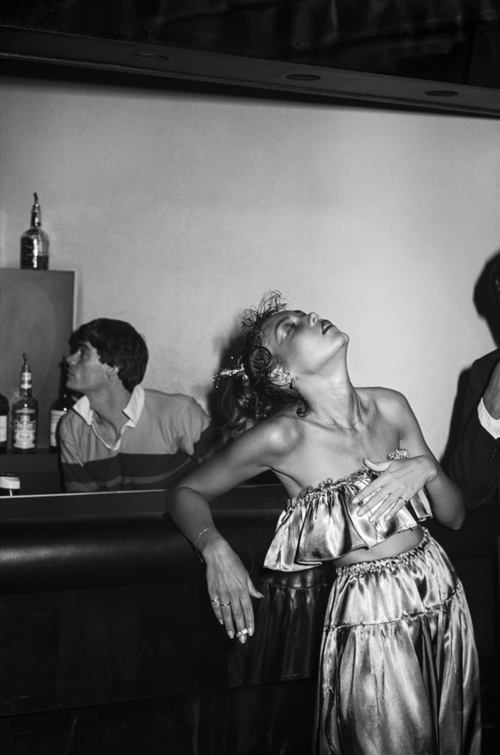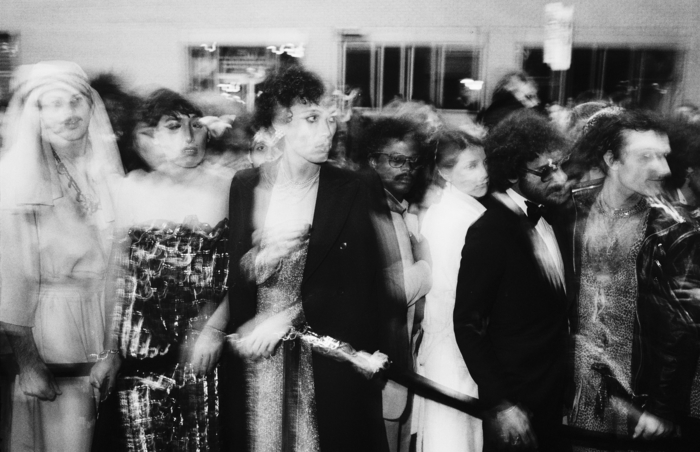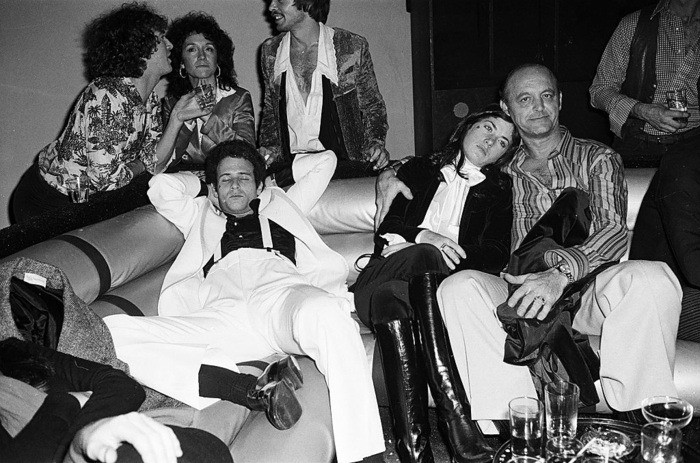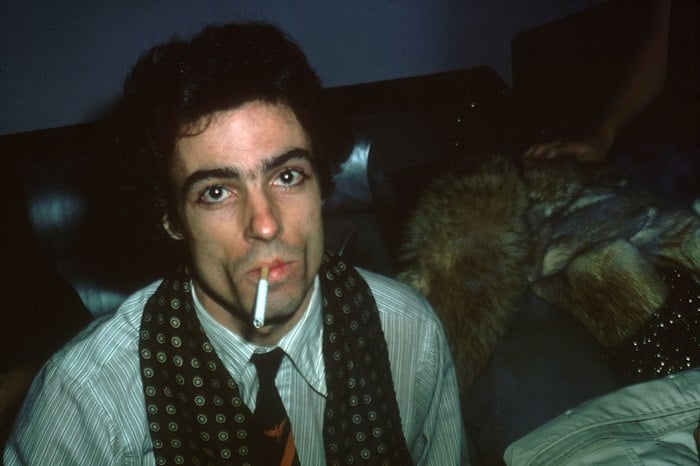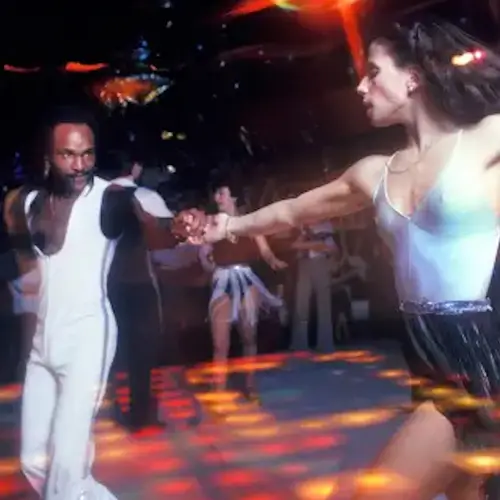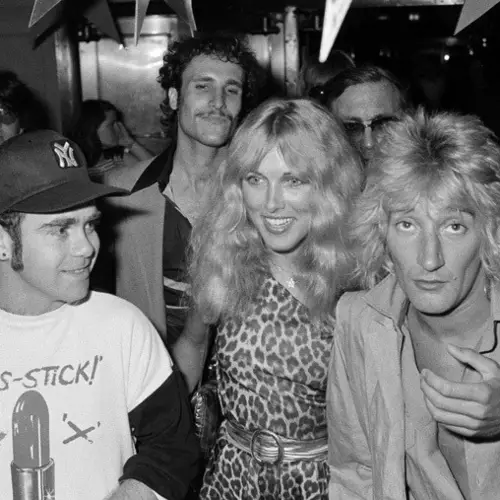In the late 1970s, Studio 54 attracted countless A-list celebrities and fashionable disco lovers — but its glory days wouldn't last forever.
Studio 54 was the ultimate place to be in 1970s New York.
Steve Rubell and Ian Schrager opened the legendary nightclub in 1977, and while it only lasted under their management for three years, the venue quickly cemented itself as the quintessential enclave for celebrities, fashionable disco lovers, and their favorite illicit activities.
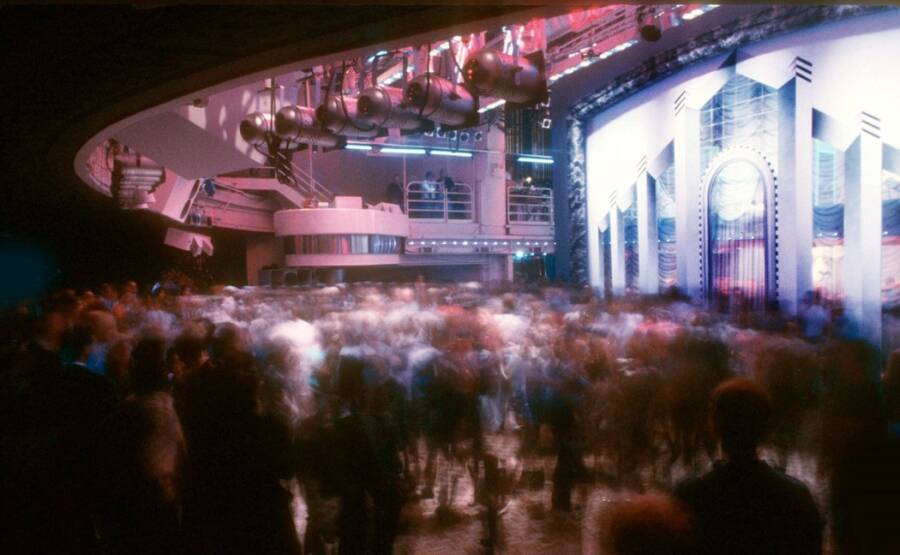
Adam ScullAs seen in countless photos, Studio 54 was once New York City’s hottest nightclub.
Indeed, club regulars included A-listers like Mick Jagger, Elizabeth Taylor, David Bowie, and Andy Warhol. And on the club’s last night under its initial management, Diana Ross and Liza Minnelli famously serenaded Rubell and Schrager — just before they went to prison for tax evasion.
Relive some of Studio 54’s wildest nights in the photos below.
Studio 54's Origins
In July 1926, an Italian-born opera impresario named Fortune Gallo purchased a property at 254 West 54th Street in New York City. He opened the Gallo Opera House at that address the following year.
However, this opera house would not last long, as it was foreclosed following the stock market crash of 1929. And over the next several decades, the building would fall into the hands of many different leasers.
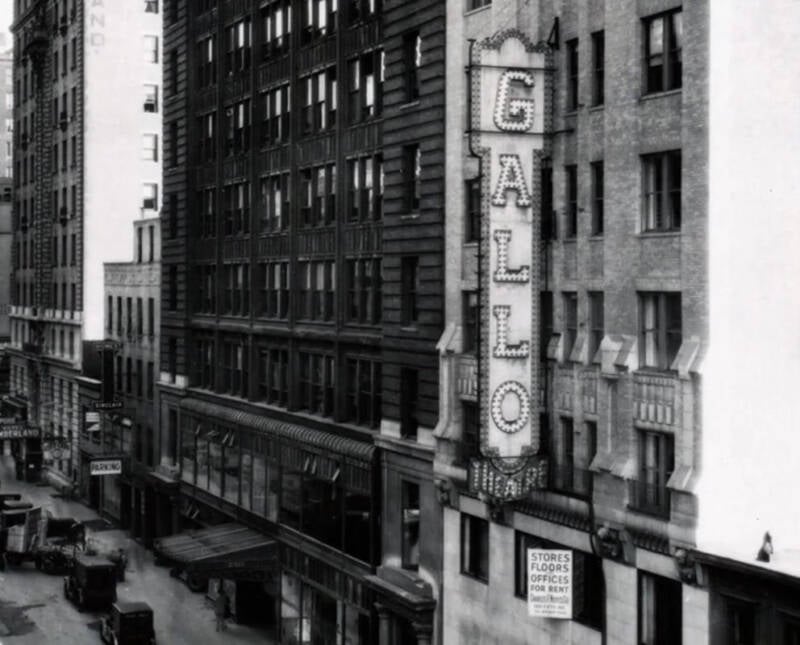
Spotlight on BroadwayA photo of Gallo Opera House from 1927, years before the property transformed into Studio 54.
After the opera house was closed, it was transformed into the New Yorker Theater. By 1933, it was being used as a nightclub called the Casino de Paris. In 1939, it became the New Yorker Theater yet again. And from the early 1940s to the early 1970s, it was used as a CBS television studio.
Around the mid-1970s, a German-born male model named Uva Harden became interested in opening an "enormous disco" in New York, and it just so happened that the property of 254 West 54th Street was available.
The Birth Of New York City's Most Legendary — And Notorious — Nightclub
Unfortunately for Uva Harden, he chose to buy the lease of the future Studio 54 with the backing of the Marlborough Gallery. According to Vanity Fair, this gallery happened to lose a major court case around the same time, and so the gallery's owner could no longer afford to back Harden's idea.
But fortunately for disco-lovers in the city, two entrepreneurs named Steve Rubell and Ian Schrager took over the lease and set about making Harden's dream into a reality. It was the perfect time to do so.
Back then, disco was hugely popular among young Americans, and Studio 54 would be perhaps the flashiest discotheque in Manhattan.
"Disco has not gotten true credit," Robert Santelli, the director and chief executive of the Experience Music Project, said in an interview with The New York Times. "There's a great value in understanding the history of disco because it teaches us what America was about in the '70s."
During a time period marred by war, economic crises, and social strife, many young people used disco's heyday to take a break from reality.

Zeitgeist FilmsA photo of Steve Rubell and Ian Schrager, the co-owners of Studio 54.
Rubell and Schrager spent over $400,000 on renovations, including the construction of a dance floor, disco booth, balcony, and floating platforms. During this renovation period, the duo forced Harden out of the venture, and some others who were involved in the process willingly backed out — leaving Rubell and Schrager as the main two in charge of the club.
On April 26, 1977, the club officially opened, welcoming some 4,000 people.
"All of us knew that night that we weren't at the opening of a discotheque but the opening of something historical, that was going to change the shape of the way people lived or played... There were no rules. Sodom and Gomorrah met the High Street that night," Robin Leach told The Daily Beast.
The club's popularity really exploded after a photo of Bianca Jagger on a horse in Studio 54 was published in the news. Soon, on an average night, the venue was hosting up to 2,000 people. Welcoming numerous celebrities, including Woody Allen, Barbra Streisand, John Lennon, Cher, and Michael Jackson, Studio 54 made over $7 million in its first year of operation alone.
Unsurprisingly, Studio 54 was considered the ultimate hotspot in 1970s New York, and everyone wanted a taste of it for themselves.
Controversy And Excitement At Studio 54
As evidenced by countless photos taken at Studio 54, the nightclub was a place of debauchery and pleasure — and had been that way since day one.
"It was a total, overwhelming experience," doorman Marc Benecke said of the club's opening night. "Just throngs of people. All these people dressed up, and the drag queens in their incredible costumes."
The scene inside the club was even more overwhelming. Guests recall cramming into the packed venue, seeing sweaty groups of people dancing haphazardly together and amorous couples embracing on the sofas.
Rival club owner Arthur Weinstein recalled going to Studio 54 during the packed opening night. "It was pure theater magic," Weinstein said. "It was like a scene from a movie. I thought, 'Holy sh*t! This is it. I'm destroyed.'"
Part of the club's success arguably came from its painstaking guest selection process, which Benecke played a key role in as a doorman.

Rose HartmanA photo of Bethann Hardison, Daniela Morera, and fashion designer Stephen Burrows at Studio 54.
"We called it casting a play," Benecke later recalled. "Or tossing a salad. We don't want all tomatoes. When you have a lot of lettuce, you have to mix in other ingredients. Sure, some big tomatoes get in all the time, but you have to include other vegetables, too."
Ultimately, only the most famous, most attractive, or most fabulously dressed could enter Studio 54, and that led to a club clientele that was primarily celebrities, young women, and members of the LGBTQ community.
"Other clubs were different. My gay friends were very androgynous-looking, and... at Studio 54 they really loved kids like us that were the fashion freaks," Valerie LeGaspi, the widow of designer Larry LeGaspi, said in an interview with The New York Times about her experiences at the venue.
As for the party scene in the club, it was known to have been raucous — a prime place for people-watching. Journalist Dan Dorfman recalled:
"There's never been a place like that for any reporter. How could you not walk out with three stories? There were so many interesting things going on. Forget about the dancing, forget about the excessive drinks, the grass they were selling all over the place, the coke stuffed into the banquettes. Forget about the upper balcony where people were having sex. What really counted was there were so many people there, they were drinking, they were relaxed, and they talked. It was Storyland!"
But the glory days of this "Storyland" wouldn't last forever.
Inside The Downfall Of The Infamous Nightclub
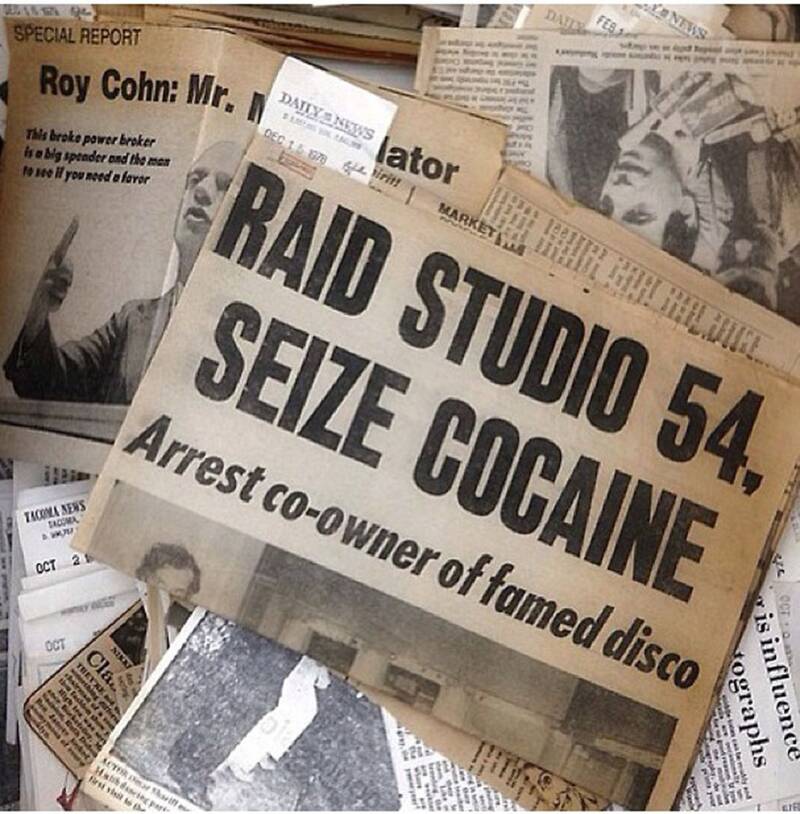
New York Daily NewsA New York Daily News article about a raid at Studio 54.
The downfall of Studio 54 began with a complaint to the IRS from Donald Moon, one of the club's disgruntled former employees.
On December 14, 1978, federal agents raided the venue and reportedly seized $600,000 in garbage bags that had been hidden in the building. They also discovered a secret set of account books that listed "party favors" for many of the club's wealthiest guests. About 300 Quaalude pills and at least a few ounces of cocaine were also uncovered at the scene.
Shockingly, Studio 54 still opened for business later that same night.
When agents questioned the club's co-owners, Steve Rubell and Ian Schrager, they were stunned by the entrepreneurs' fearlessness. Assistant U.S. Attorney Peter Sudler recalled, "At our first debriefing, I asked Steve, 'Would I get into Studio 54?' He looked at me, he had this little smile. He said, 'No. You're one of the gray people.' I was in my office, I thought the agents were going to fall on the floor... What chutzpah!"
Chutzpah aside, both Rubell and Schrager were eventually charged with tax evasion and "skimming" about $2.5 million from the receipts of Studio 54. The two men were ultimately convicted and sentenced to three-and-a-half years in a minimum-security prison in Alabama in January 1980.
Before they served their time, though, Rubell and Schrager attended one more party at Studio 54, marking the end of an era.
In their absence, the club remained open, but the venue had lost its liquor license, leading to a loss of interest among partygoers. There were various efforts to revitalize Studio 54, and while a new incarnation did attract some famous faces — such as Madonna, Boy George, and George Michael — the venue never quite returned to its glory days of the late 1970s.
The club eventually fell into the hands of the Roundabout Theatre Company in 1998. The company still owns the property to this day.
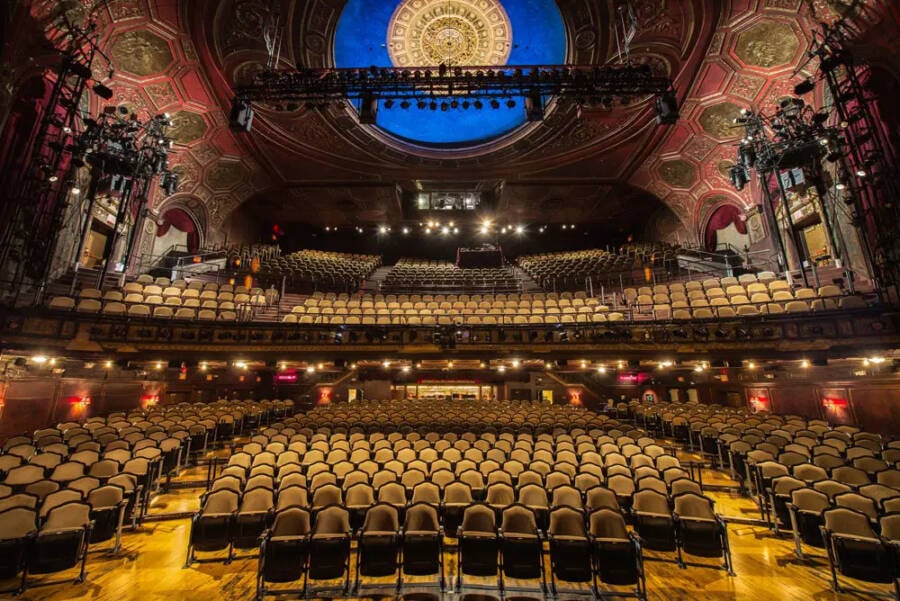
Roundabout Theatre CompanyA modern-day photo of Studio 54, which is now owned by the Roundabout Theatre Company.
Despite Studio 54's thrilling history, it's not surprising that its disco days ended. The genre had been losing popularity, and the infamous Disco Demolition Night of 1979 — when tens of thousands of people went to a Chicago baseball game to destroy disco records — only hastened its demise.
As for Rubell and Schrager, both men were released early from prison in April 1981 and quickly dove into new entrepreneurial projects.
"We went in and then we came out ready to get started," Schrager said, according to an Alabama news source. With disco behind them, the duo invested in hotels in New York, as well as a new nightclub, The Palladium.
But tragically, Rubell soon faced devastating news about his health. He ended up contracting HIV, and ultimately died from AIDS at age 45 in 1989.
Schrager, now in his late 70s, has since reflected on Rubell's untimely death: "You never get over that kind of loss. It's a scar. It gets better. But you always have it. It still brings a sadness when I think about it."
Schrager continues to work on his real estate business in New York, but occasionally offers interviews about his past with Studio 54.
"The place really exploded," he said. "It was like a meteor that just crossed the sky, but it was cursed. It crashed, and it took everybody that was involved with it."
After looking through these Studio 54 photos, see what New York City looked like in the 1970s. Then, check out the world's most unusual nightclubs.
